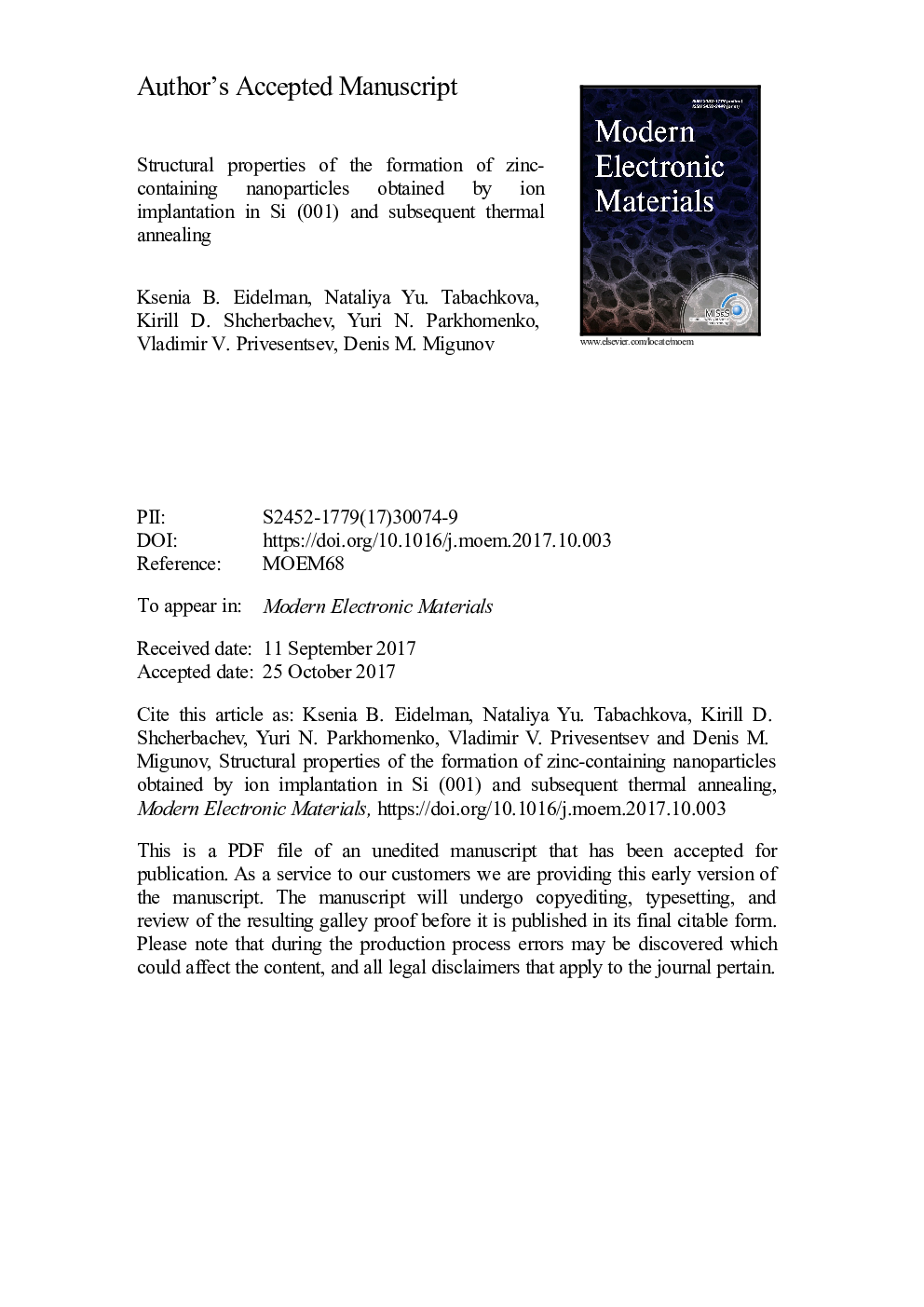| Article ID | Journal | Published Year | Pages | File Type |
|---|---|---|---|---|
| 7924422 | Modern Electronic Materials | 2017 | 21 Pages |
Abstract
We show that a damaged layer with a large concentration of radiation induced defects forms near the surface as a result of the implantation of Zn+ ions with an energy of 50 keV. In the as-implanted state, nanoparticles of metallic Zn with a size of about 25 nm form at a depth of 40 nm inside the damaged silicon layer. Subsequent annealing at 800 °C in a dry oxygen atmosphere leads to structural changes in the defect layer and the formation of Zn2SiO4 nanoparticles at a depth of 25 nm with an average size of 3 nm, as well as oxidation of the existing Zn particles to the Zn2SiO4 phase. The oxidation of the metallic Zn nanoparticles starts from the surface of the particles and leads to the formation of particles with a “core-shell” structure. Analysis of the phase composition of the silicon layer after two-stage implantation with O+ and Zn+ ions showed that Zn and Zn2SiO4 particles form in the as-implanted state. Subsequent annealing at 800 °C in a dry oxygen atmosphere leads to an increase in the particle size but does not change the phase composition of the near-surface layer. ZnO nanoparticles were not observed under these experimental conditions of ion beam synthesis.
Related Topics
Physical Sciences and Engineering
Materials Science
Electronic, Optical and Magnetic Materials
Authors
Ksenia B. Eidelman, Nataliya Yu. Tabachkova, Kirill D. Shcherbachev, Yuri N. Parkhomenko, Vladimir V. Privesentsev, Denis M. Migunov,
